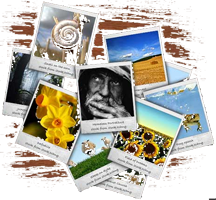 One of the most in-demand areas of freelance writing is supplying editors with descriptive articles. If a writer with good writing skills is attentive, discriminative, and has a “flair” for topical articles, he or she has the characteristics for producing such work.
One of the most in-demand areas of freelance writing is supplying editors with descriptive articles. If a writer with good writing skills is attentive, discriminative, and has a “flair” for topical articles, he or she has the characteristics for producing such work.
The field of the descriptive article is very wide. A few of the most popular subjects of descriptive writing include:
1) careers and professions in all industries;
2) arts, crafts, and handicrafts;
3) natural history and Nature with her curious and freak phases;
4) the objects of common or uncommon life;
5) beautiful or unusual scenery, cities, scenes of life, and so on—
You can find nearly any subject—great and small—to write descriptive articles.

The first step in descriptive writing is to choose the most interesting points of the subject.
This is not difficult to do. The process is intuitively adopting the natural order of observation and noticing the most important points. The habit of accurate observation is a most desirable skill to have.
You need to learn how to discard instinctively the dull and dry features of your subject, keeping in mind that:
1) a proper number of minor details adds interest and clearness; and
2) too many details serve to render the whole obscure.
If properly selected, and presented, minor details add much to the beauty or usefulness of a description. If strung together in jerky short sentences, the effect may tire and confuse the reader. Often a single adjective adds an element of description more effectively than what you can do with an entire sentence.
 The effectiveness of descriptive writing depends largely on the right choice of words.
The effectiveness of descriptive writing depends largely on the right choice of words.
It is not enough to depict the memorable points of the subject tersely and vigorously: you must do this attractively, picturesquely.
As in every branch of the literary art, you can improve your writing style with skills that you’ve developed, strengthened, and refined by practice. But you should never sacrifice truth of presentment for picturesque effect. Facts and strict truthfulness form the heart of descriptive writing.
Having a unique vocabulary and eccentric phrasing can aid you in securing the attention of your readers. Using comparison and imagery serves a purpose equally great. You can acquire all the literary devices for making vivid pictures rather easily. Such aids not only help to make the subject of your article clear and vivid, but they also can add flavor and spice to the language, which counts for much in the potency and beauty of description.
The effectiveness of a descriptive article—such as one covering a ten day journey through Africa—is determined more by the impression it makes on our feelings than by the vividness and succinctness of the details.
A peculiarly worded phrase, a simile, or an appropriate remark can evoke a powerful feeling.
The aim of the descriptive writer is not embellishment, in spite of its appropriateness; rather it is toward simplicity and lucidity, both in ushering details
and impressions and in setting them forth.
 You should strive to use the right details, and skillfully combine them—in the briefest possible space—into a strongly vivid picture, or series of smoothly-running little cinematographic pictures.
You should strive to use the right details, and skillfully combine them—in the briefest possible space—into a strongly vivid picture, or series of smoothly-running little cinematographic pictures.
In instances of articles dealing with travel, conditions of life and living, and the like, including photographs are essential. They help to sell good work. If you are writing about a familiar theme, then photos are a requisite if you want to impress the editor. The value of a descriptive article is enhanced fifty percent when you include photos.
You can examine the many publications that demand articles of this class, and review the most popular subjects that they publish. To find publications that publish descriptive articles, search our free Writer’s Guidelines Database.


